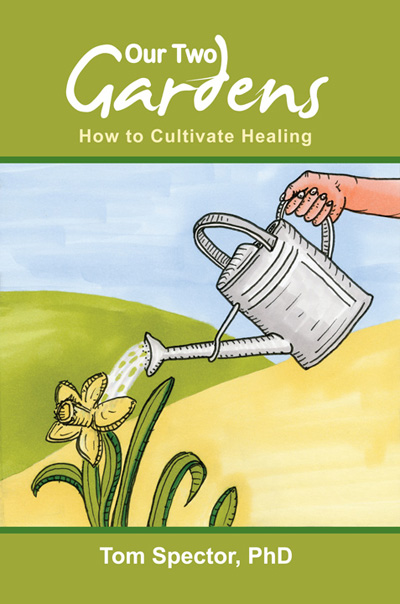


Purchase Paper Back Book from:
Lulu press
Amazon
Barns & Noble
Download eBook:
Kindle: Amazon
Nook: Barns & Noble
iPad: Apple’s iBook Store
Kobo ebooks
For Bulk Purchases:
Contact Tom at:
spectors@mindspring.com
(919) 489-0516
Tom’s Presentations:
Scheduled Events
Introduction
I never really wanted to become a dentist. But, for some reason, after earning a BA in psychology and philosophy, I spent one unhappy year in dental school. I soon realized it wasn’t right for me, so on a whim, I applied to graduate school at Yale University in the Department of Pharmacology.
To this day, I still don’t understand why Yale’s highly prestigious center for drug research accepted me as a student. I really was unprepared for this intense Ph.D. curriculum. By 1968, the Director of Graduate Studies was feeling the same way. He called me to his office and said, “Tom, we’re concerned about your performance. We’re thinking about transferring you to another school where you’d be more successful.” These were painful words to hear, but they were a realistic description of my situation at that time.
At first, I took this counseling to be a wake-up call, a reasonable encouragement to make an effort to improve my standing. However, I found it strange when he approached me several more times and repeated the same phrase verbatim within two weeks of the first warning. I began to suspect he was attempting to emotionally undermine me and force me out of the program. I found out the good doctor had suffered greatly as a graduate student, and appeared determined to perpetuate his misery. Based on his outstandingly successful track record of sabotaging previous students, I figured I was his next target.
Adding to this already unsettling situation, I had recently made a difficult personal discovery. I realized I had been a battered child. The story of my childhood unfolded for me after a friend mentioned I never looked her in the eyes when we were talking. It immediately became evident that I had low self-esteem. My father was both physically and emotionally abusive. My self-esteem had been systematically battered down to toe-level and I was very angry.
It may sound strange that I didn’t recognize the battering when it was happening, but I know now that battered children of my era commonly accepted abuse as “normal,” especially when the abuser frequently tells the child that he does these things because he loves him. So, on two fronts, I was dealing with low self-esteem and anger, and my Ph.D. program was in serious jeopardy. It was clearly time to do something.
Now, as this was the 1960s, I had a variety of choices for relief, but I wanted an approach that was different from the common culture; one that was legal, had no untoward side effects such as paranoia, and would serve me in the long term. The answer I chose was meditation. I drove into New York City three times to take a course in meditation.
Meditation served me well. I began practicing twice every day, and something intriguing happened. My mind started to become quieter and I began to see things more clearly. I started to make sense of the scientific concepts that had previously left me perplexed. I quickly caught on and managed to complete the full Ph.D. program in three years flat. To my knowledge, 36 months is the standing record for the fastest Ph.D. ever awarded in the department.
Meditation seemed to clarify issues for me and illuminate the best paths forward. I continued to maintain a daily practice of meditation even during my tenure as an International Vice President for Cancer Research for one of the world’s largest pharmaceutical companies.
In 1973, I attended a talk by renowned spiritual teacher Ram Dass. I began to study his teachings, and they eventually led me to his intense meditation retreat in 1976. On the last day, after the “no talking” and “no eye contact” restrictions were relaxed, I experienced a magical encounter with Elisabeth Kübler-Ross, who also attended this retreat. She is the remarkable pioneer who brought dignity and understanding to people in the dying process. Our brief meeting had a profound effect on my life. Because of the powerful connection with Elizabeth (more about this later), as soon as I returned home, I began visiting seriously ill people and sharing meditation techniques with them.
Before long, I expanded my meditation teaching to include people who were relatively healthy, and soon I was presenting meditation workshops to various groups and organizations and was working with private clients. As I did this, I began to understand some of the basic fundamentals of healing. Much of my knowledge came from the teachings of Ram Dass, Sruti Ram, Thich Nhat Hanh, and Jon Kabat-Zinn. But I learned even more from my own personal experiences and insights generated from meditation. I started presenting programs on healing along with meditation instruction. Since then, I have found truth in the premise, “you teach best that which you need to learn the most.” During the simultaneous process of learning and teaching, I have undergone significant healing. Most of my anger is gone, and my self-esteem has improved considerably.
I learned your self-esteem has nothing to do with what other people think about you or what they have done to you. It’s strictly related to what you think about yourself and how you treat yourself. Our self-esteem grows as we take steps to learn about our true Self, our inner being. Meditation leads us to discover this beauty that lies within each and every one of us.
However, you probably realize many obstacles may impede the journey to Self-discovery, and that meditation alone may not be sufficient to overcome these obstacles. The good news is, the sources of these obstacles can be readily understood, and the paths through them are relatively simple.
I have learned we actually create many of these obstacles when we react to normal situations in unhealthy ways. Accordingly, we can learn how we create our own impediments to healing, how to stop creating them, and how to bring about healing and inner peace. The self-help techniques presented in this book will help readers achieve these goals. Although the methods are straightforward and very practical, obtaining healing and inner peace is not easy. It requires considerable effort and perseverance, but is worthwhile in the highest sense. My wish for you is that you tap into your inner strength to carry you forward on your journey, and, at the same time, you are kind and gentle with yourself.
